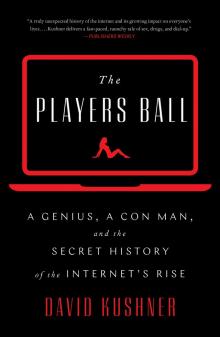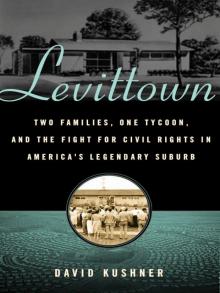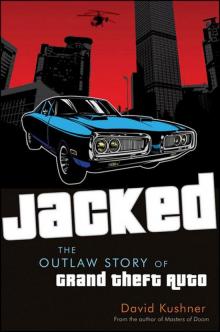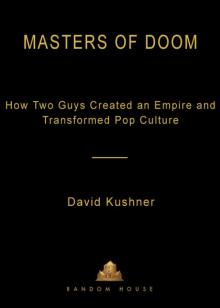- Home
- David Kushner
Levittown
Levittown Read online
LEVITTOWN
BY THE SAME AUTHOR
Jonny Magic & the Card Shark Kids
Masters of Doom
LEVITTOWN
Two Families, One Tycoon, and the
Fight for Civil Rights in America’s
Legendary Suburb
DAVID KUSHNER
Copyright © 2009 by David Kushner
All rights reserved. No part of this book may be used or reproduced in any manner whatsoever without written permission from the publisher except in the case of brief quotations embodied in critical articles or reviews. For information address Walker & Company, 175 Fifth Avenue, New York, New York 10010.
Published by Walker Publishing Company, Inc., New York
All papers used by Walker & Company are natural, recyclable products made from wood grown in well-managed forests. The manufacturing processes conform to the environmental regulations of the country of origin.
LIBRARY OF CONGRESS CATALOGING-IN-PUBLICATION DATA
Kushner, David, 1968–
Levittown : two families, one tycoon, and the fight for civil rights in America’s legendary suburb / David Kushner.—1st U.S. ed.
p. cm.
Includes bibliographical references.
eISBN: 978-0-802-71973-7
1. Levittown (Pa.)—History—20th century. 2. African Americans—Civil rights—Pennsylvania—Levittown—History—20th century. 3. Segregation—Pennsylvania—Levittown—History—20th century.
4. Levittown (Pa.)—Race relations. 5. Levitt, William, 1907–1994. I. Title.
F159.L6K87 2009
305.896'073074821—dc22
2008026319
Visit Walker & Company’s Web site at www.walkerbooks.com
First U.S. edition 2009
1 3 5 7 9 10 8 6 4 2
Typeset by Westchester Book Group
Printed in the United States of America by Quebecor World Fairfield
For Sue, Sami, and Mia
CONTENTS
Author’s Note
Prologue
1 The Captain and the Kids
2 The Other Harlem
3 Dodgers Fans
4 The Perfect Plan
5 A Good Home
6 Pioneers
7 Neighbors
8 An Extra Bedroom and a Garage
9 43 Deepgreen Lane
10 The Secret Castle
11 The Baby Won’t Know
12 The Missing Thumb
13 Battle Lines
14 Back to School
15 Dandelions and Bayonets
16 Freedom Fighters
17 The Stand
18 The Promise
Epilogue
Acknowledgments
Notes
Bibliography
AUTHOR’S NOTE
YOU NEVER KNOW what stories your neighbor might have to tell. My mother-in-law, Harriett, urged me to sit down and talk with her neighbors, Bea and Lew Wechsler, about their experience in Levittown, Pennsylvania. Finally one day I listened. Bea came out of her house carrying a small dusty cardboard box for me. When I opened it that night, I found yellowed newspaper articles, fading black-and-white photographs, handwritten letters from around the world, and a copy of her husband Lew’s riveting self-published memoir, The First Stone.
There was more. The Wechsler’s former Levittown neighbor Daisy Myers had also written a powerful memoir, but it had languished in her attic for nearly fifty years without publication. It turned out Daisy was alive and well in York, Pennsylvania. After I drove to meet with her, she had something else to share with me in addition to her manuscript (later published as Sticks ’n Stones by the York County Heritage Trust): another dusty old box. Inside there was a thick tattered transcript of the trial that had become so central to their lives nearly a half century before.
I began to investigate the lives of the Levitts, the creators of the town, their ambitions, their plans, their conflicts. The more I explored, the more a larger story began to take shape—from the creation of Levittown through the battle of 1957 and its aftermath. And it was one, to my surprise, that had never completely been told. Though I’m not a historian, there was something I could do: tell it. I spoke with Bea, Lew, and Daisy about my interest, and they agreed to relive their part of the story with me over many long afternoons. For the rest, I spent four years reporting, interviewing, and researching, talking with surviving members of the Levitt family and others, and taking many trips to Levittown, Pennsylvania, where the Myers’ house still stands at 43 Deepgreen Lane. This book is the result. The scenes, events, and dialogue are culled directly from my research. Everything is real. I did my best to tell it as it happened, and get out of the way.
PROLOGUE
THERE ARE STORIES that are true, and stories we want to believe. One day not long ago, a group of people discovered that one of their favorite stories might not be so true after all. It happened one bright morning in Stony Brook, New York, a rolling, wooded town on the North Shore of Long Island. The sky was swimming-pool blue, the lawns, AstroTurf green. Inside an old red carriage house on a hilltop, a few dozen locals chose to spend this gorgeous day indoors for a conference entitled “Suburbia at Sixty.”
On a small stage, a young professor pointed his remote-control clicker at a projector screen behind him and said they were going to play a game. He would show them four slides and they would tell him which one didn’t belong with the rest. The attendees adjusted their glasses and inched forward in their seats.
Click. The first slide showed a black-and-white aerial view of a cookie-cutter suburb with winding streets of identical houses in perfect lines. Click. The second, also black-and-white, captured a happy nuclear family from the 1950s standing in front of a boxy house. Click. The third slide triggered chuckles of recognition from the crowd; it was a promotional photo of the Cleaver family from the popular 1950s sitcom Leave It to Beaver. The final click brought up the last shot: a color picture of a McMansion, one of those sprawling new suburban castles taking over the land.
“It’s that one!” an older woman shouted from her seat.
“The McMansion,” concurred another.
The professor brandished his clicker. “Actually, I was thinking of this one,” he said, in a tone that suggested he was sorry to disappoint them. Then he booted up the picture of the Cleavers again. “This one sticks out because it’s an image of make-believe.”
But given the topic of the day’s conference, the audience couldn’t help but blur the line. The conference title “Suburbia at Sixty” was both a misnomer and bit of good old American mythmaking. In fact, the suburbs are way older than sixty years and began far from these shores. Historian Kenneth Jackson traced the dream back to the days of Babylon B.C. Clay tablets found in Iraq show a letter to the king of Persia from 539 B.C. in which the writer effuses about his new home outside town. “Our property seems to me the most beautiful in the world,” he wrote. “It is so close to Babylon that we enjoy all the advantages of the city, and yet when we come home we are away from all the noise and dust.”
But for most Americans, including those gathered here, the fairy tale begins thirty miles down the road. It’s the story of the model town that sprouted up from the potato fields when the nation’s greatest heroes, the veterans returning from World War II, desperately needed homes. It’s the legend of Levittown, the community often called the “original suburb,” and that’s what the neighbors had come to celebrate this day.
Across the road at the small, one-story Long Island Museum, the story unfolded in three rooms of newsreels, artifacts, and black-and-white photos. And as the visitors noted, it had much to say about their modern world. It started with a people in crisis. Despite the booming postwar economy, there weren’t enough affordable homes to go
around. Young veterans and their families were forced to sleep in trolley cars in Chicago and surplus bins in North Dakota. In Omaha, someone took out an ad: “Big Ice Box, 7 × 17 feet, could be fixed to live in.” An editorial cartoon on one wall of the museum showed a family looking up longingly at a home on a puffy cloud. “How can we expect to sell democracy in Europe,” read a quote by Harry Truman, “until we prove that . . . we can provide decent homes for our people?”
But thanks to one entrepreneurial family, the American Dream of a good home in a good town would soon come true. Down the hall at the museum hung a life-size photo of these men, the Levitts: two dapper young brothers, William and Alfred, and their diminutive father, Abe. In contemporary terms, they had the kinetic chemistry and renegade brash of a Silicon Valley start-up. Abe, a self-made immigrant and passionate horticulturalist, provided the springboard and the grass seed. Alfred, a self-taught architect (and sci-fi geek), designed the homes. And Bill, a Barnumesque promoter and marketing whiz, built the business and sold the dream.
Though there had been suburbs before theirs, the Levitts delivered something new: an inexpensive home with state-of-the-art gadgets in a seemingly perfect storybook town. With the federal government’s subsidies for vets, the Levitts applied the innovations of mass production to building their houses. They didn’t invent their product, but they mastered something dazzling: how to swiftly make and sell it. As the veterans watched in wonder, the Levitts churned out inexpensive Cape Cod houses by the dozens with assembly-line precision. Levittowns in Pennsylvania and New Jersey later followed.
And the builders were heroes. Bill Levitt, the front man, was a national icon and titan on the scale of Henry Ford and Walt Disney. Time magazine put him on the cover and ordained Levittown “as much an achievement of its cultural moment as Venice or Jerusalem.” The opening of Levittown triggered the greatest migration in modern American history. During the 1950s, twenty million Americans would move to suburbs, the largest movement since the westward expansion of the 1880s. As the rest of the exhibit showed—from the I Love Lucy film clips on the vintage TV to the faded Levittown Boosters Little League uniform tacked on the wall—Levittown would become synonymous not just with the prosperity and hope of the 1950s, but the enduring vision of the suburbs that would draw families for decades.
At the beginning of the twenty-first century, when the Long Island conference took place, suburbia remained a national obsession. Two thirds of Americans lived in the suburbs. Over thirteen million new homes, including many in cookie-cutter suburban and McMansion developments, had been built in the last decade alone. Over seven million were tucked away behind walls and pristine lawns of gated communities. Suburbia shaped our culture, landscape, and industry, from the fast food we ate on the way to and from work, to the shows we watched when we got home.
Why the fascination? From war to global warming, Americans felt increasingly under siege. As threats rose, a house in the suburbs represented the ultimate in security and community, a picture-perfect plan in a world that seems increasingly without one. Just as in the 1940s, parents still wanted good schools for the kids, friendly neighbors, immaculate lawns. And they were working harder, commuting longer, and striving higher to have it all.
But, as the “Suburbia at Sixty” conference got under way, the attendees learned that their dream could be over. With oil prices and global warming on the rise, speaker Ted Steinberg, a Pulitzer-nominated historian, said the story of suburbs may be ending. “Is the idea of suburbia an ecologically sustainable one over the long term?” he asked the crowd. “Will there be a symposium like this two generations from now? Or, as some people argue, have we reached as the end of suburbia? Is it possible this high-energy lifestyle—the automobile lifestyle—will disappear in some ways, and we’ll have maybe a string of ghost towns? I think that’s the central issue of our time.”
As the end of this story loomed, it called the beginning into question. The answer could be found by digging—with new light—into the past. Because while the dream of Levittown had embedded itself into the popular culture and imagination, a darker, but no less American, story lurked inside. And it was nowhere to be found on the walls of the museum this day.
America’s model town was built not just on hope, but on fear. In part, it was meant to ward off the widespread terror of a foreign threat: Communism. “No man who owns his own home and lot can be a Communist,” Bill Levitt once said, “he has too much to do.” And “the most perfectly planned community in America,” as Levitt described it, was also built to keep out African-Americans. Levitt excluded African-Americans for decades after the reme Court ruled it unconstitutional to do so. It wasn’t the first suburb to do this and it wouldn’t be the last. But it epitomizes how systematically people can be shut out of a dream—and yet how heroically they can take it back.
This is the story that unfolded one unseasonably hot summer in 1957 on Deepgreen Lane, a quiet street in Levittown, Pennsylvania. There, a white, Jewish, Communist family named the Wechslers secretly arranged for an African-American family, the Myerses, to buy the little pink house next door. What followed was an explosive summer of violence that would transform their lives, and the nation. It would lead to the downfall of a titan and the integration of the most famous suburb in the world. It’s a story of hope and fear, invention and rebellion, and the power that comes when ordinary people take an extraordinary stand. And, unlike the legend, this was real.
This is the story of Levittown.
One
THE CAPTAIN AND THE KIDS
ONCE UPON A time on a cold, dark night, a terrible sea lashed the boat of the notorious Captain Kidd. Lightning sliced darkness. Thunder clapped. Water crashed. Brash and bold, Kidd acted as though he had invented piracy and the search for treasure. But now, all around him, a mutinous lot of rebels set out to break him. Sickness had overtaken his men, a plague of cholera ravishing their bodies. And they wanted Kidd dead. They were closing in on him with their cleavers and pistols. Captain Kidd needed help quickly. “Abraham!” he howled into the wind.
From out below the deck shot his trusty sidekick: a slight man with a large nose and a hump on his back. Abraham fought the dastardly crew one by one, picking them off with deftness and ease. When the waves stilled, and the clouds parted, he stood by his captain’s side, eyeing a lush island on the horizon. It was a new frontier. And not a pirate in the world could stand in their way.
As Abraham Levitt finished telling this tale, he looked down warmly upon his two young boys—William and Alfred—listening raptly at his feet. They sat in the well-furnished living room of a brownstone in Brooklyn, New York. Musty hardcover books from history to horticulture lined the shelves. The sweet smell of stuffed cabbage rose from the kitchen, as their bosomy mother, Pauline, labored at the stove. A smile spread across Abe’s face.
“And of course you remember my pursuit of Wild Ike Mike in the jungles of Africa!” Abe continued. “And how I rescued Buffalo Bill from the clutches of that villain! How I cut open the body of that monstrous whale and found Jimmy, our cabin boy—swallowed by that creature—sitting on a crate of oranges playing ‘Happy Days Are Here Again!’ All of which is as true as the Gospel.”
How was it possible that this diminutive man in his thirties had sailed the high seas with Captain Kidd two hundreds years before? Abe was slender with a wide, balding head, narrow eyes, large, pointy ears, and a slight hunch on his back. Little, nearsighted Alfred in his thick glasses thought of his comic books, and science fiction novels. Had his father invented some new technology to control the space/time continuum? His brother, Bill, four years older, couldn’t care less about such things. Bill’s mind filled with dreams of swashbuckling instead. They had heard enough of Abe’s stories before to get the moral: Anything is possible. This world can be mean and awful. It can suck the marrow from your bones and replace it with fear. But it is up to you to live your dreams and share your bounty with the world. As their father liked to say, “The way to be h
appy is to make others happy. All else is trivial.”
Though he may never have battled alongside Captain Kidd, Abraham Levitt, like most immigrants, had fought hard to get here. His father, a rabbi named Lewis, had fled anti-Semitism in Russia for America in the 1860s. But Lewis’s life in the new land with his Austrian wife, Nellie Groden, was tough. The family was desperately poor, and Abe, the youngest of five, was born in the kitchen of his family’s home in Williamsburg, Brooklyn, on August 2, 1880.
Despite his unceremonious beginnings, Abe sought the best for himself at an early age. While the other kids played stickball in the street, he dropped out of school at age ten to earn money washing dishes at restaurants and selling newspapers at the foot of the World Building on Park Row. But he was also a dreamer. In his spare moments, he’d take to the city’s parks and gardens, where he’d spend hours losing himself in the natural beauty. His love of nature rivaled only his passion for reading. He started with magazines and newspapers, but soon moved on to books with wide-ranging subjects—history, economics, science, and, of course, the stories of Captain Kidd.
By his teens, Abe had joined literary and scientific societies and would venture over the river to Manhattan to attend classes at Cooper Union in the East Village. The more he learned, the more he began to reject the orthodox religious views of his father, whom he saw as domineering. Among the writings he enjoyed was the work of Ernst Haeckel, a German zoologist and comparative anatomist. In addition to naming thousands of species, Haeckel was a philosopher who posited a controversial and racist theory called recapitulation. In his view, an individual’s biological development mirrored the evolution of its species. “In order to be convinced of this important result, it is above all things necessary to study and compare the mental life of wild savages and of children,” he wrote. “At the lowest stage of human mental development are the Australians, some tribes of the Polynesians, and the Bushmen, Hottentots, and some of the Negro tribes.”

 The Players Ball
The Players Ball Alligator Candy
Alligator Candy Levittown
Levittown Jacked: The Outlaw Story of Grand Theft Auto
Jacked: The Outlaw Story of Grand Theft Auto Masters of Doom
Masters of Doom